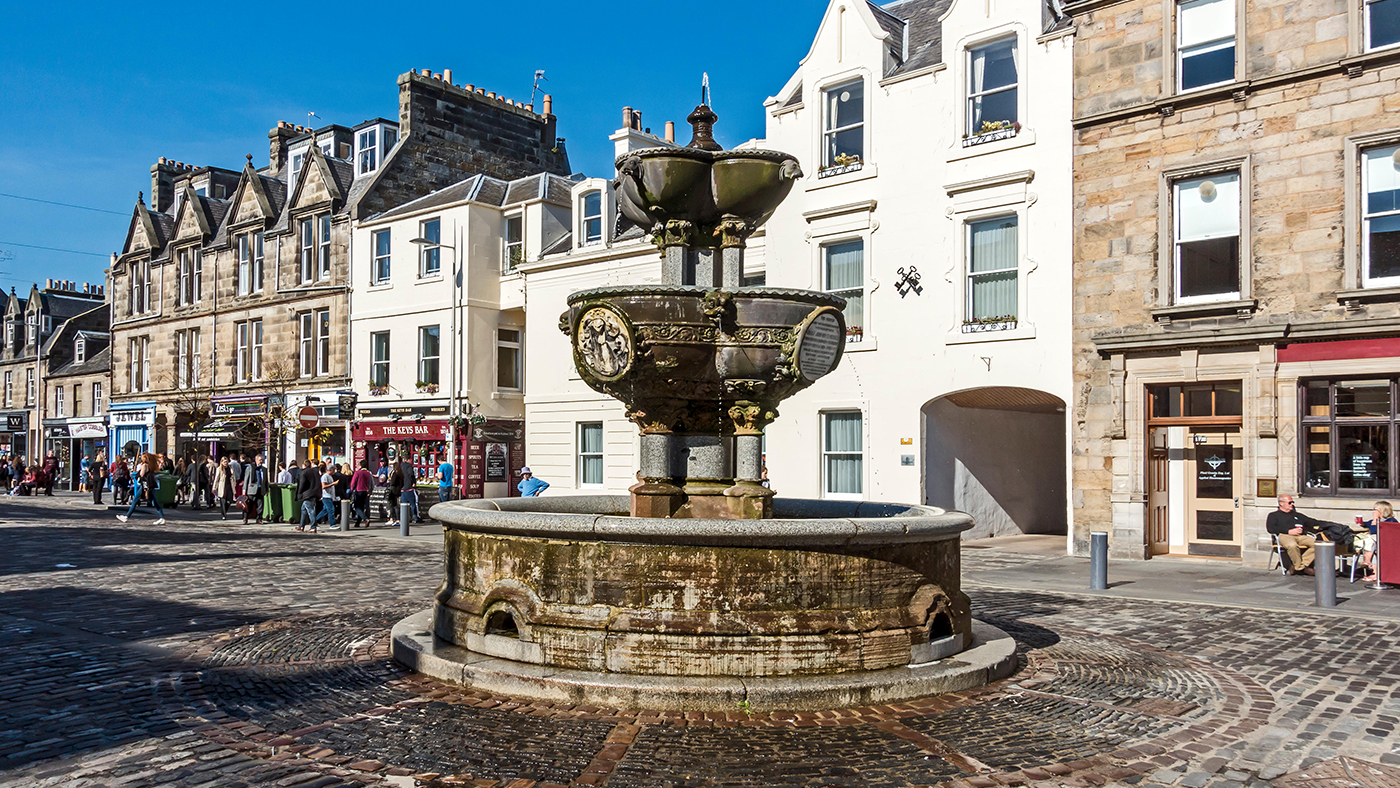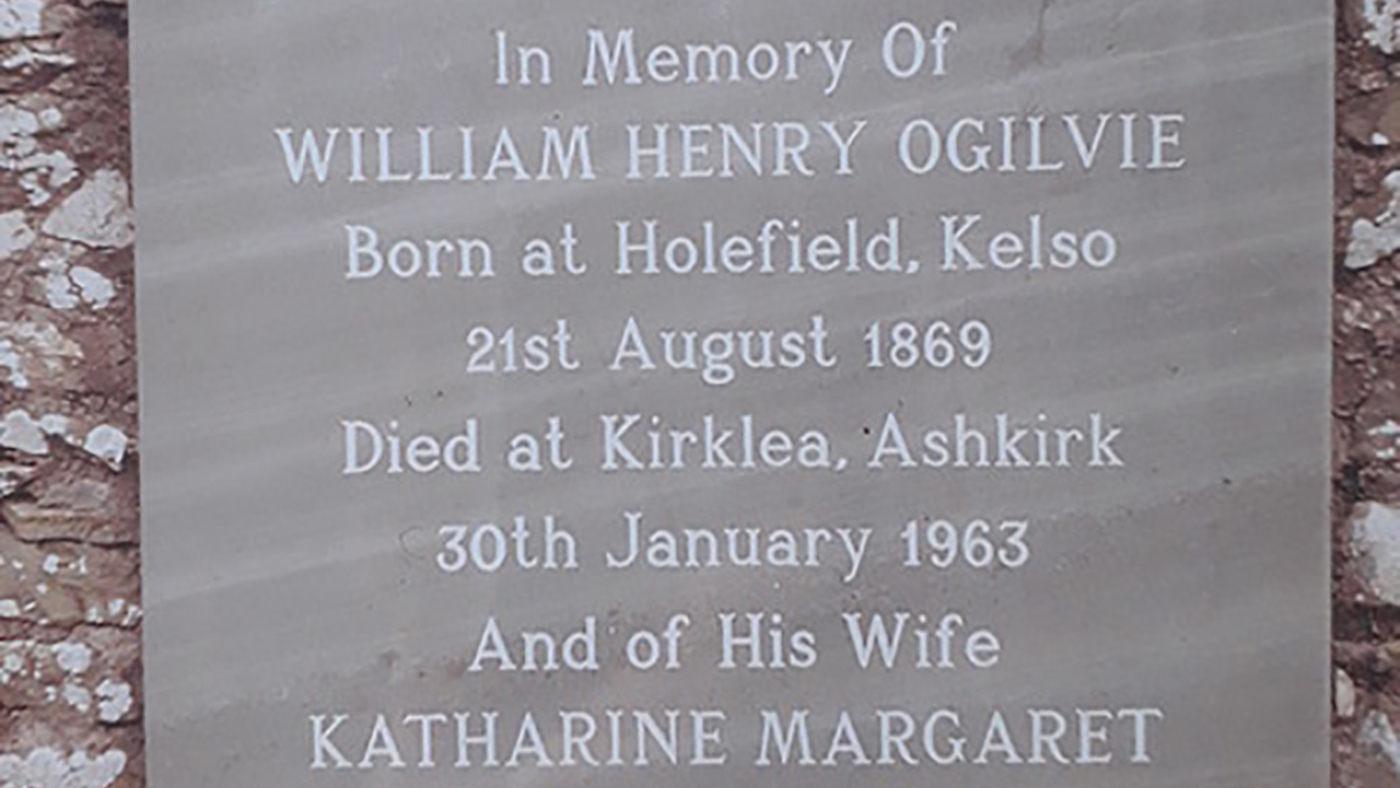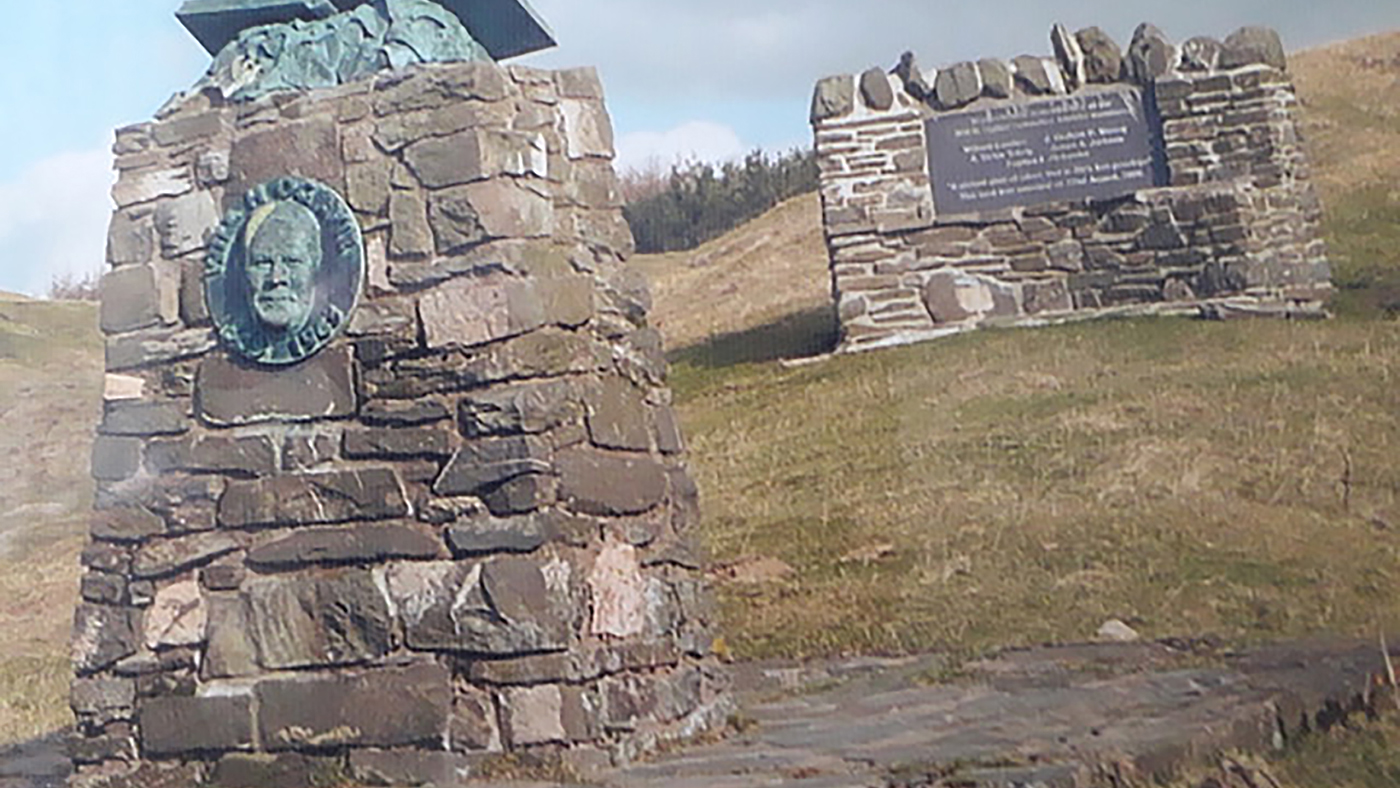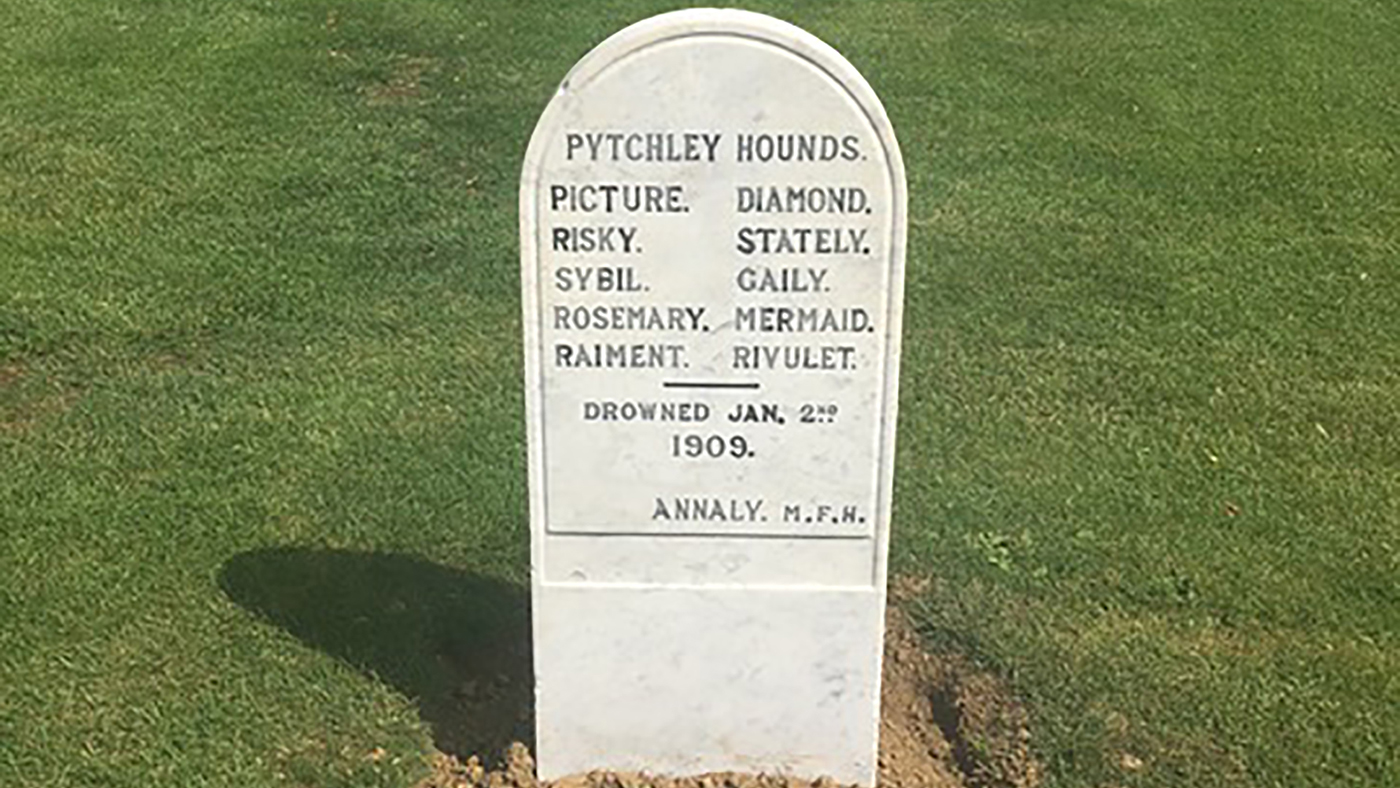Where are the hunting greats buried? Rory Knight Bruce takes a pilgrimage around some of our heroes’ graves
In his often-quoted and much-loved hunting poem, Running on!, the Scottish Border poet Will H Ogilvie includes the line: “Good men follow the good men gone”. While this may offer some solace to those still living, particularly when it is read at funerals, it rather asks the question as to where the ones that have “gone” have, in fact, gone.
The answer, on Earth at any rate, is to a variety of places – to churchyards and memorial cairns, ashes scattered on the winds and in all manner which celebrate their hunting lives.
Any selection of these gures is bound to some extent to be personal, but they serve to show the rewards that may be had from visiting any hunting gure’s grave.
Ogilvie himself, who spent 11 years in Australia, has a plaque in Ashkirk churchyard near Selkirk as well as three “down under”. His ashes on his death were scattered on a hill beside the road to nearby Roberton, and a cairn to him was dedicated in 2019 (150 years after his birth) by Lord Polwarth, the poet’s grandson Tom Ogilvie, and the Will H Ogilvie Memorial Trust.
The Trust has also undertaken the republishing of many of Ogilvie’s poems, not just on hunting, and paid to have them distributed in schools throughout the Borders.
“It was a job that had to be done or be lost forever,” says Ann Holt, secretary of the trust.
Readers of Horse & Hound will have no difficulty in identifying the importance to hunting of Scottish novelist GJ Whyte- Melville, who was responsible for the words that adorn every front cover. But how many have visited his grave in St Mary’s church, Tetbury, to which he was taken in 1878, following a fatal fall on the at with the VWH?
It is horizontal and modest, and the lead lettering has seen better days.
In St Andrew’s, a more prestigious 14-foot memorial fountain was erected to Whyte-Melville in 1880. It fell into disuse in the 1930s and was treated as a flower bed for many decades. In 2015, the St Andrews Merchants Association led a campaign that resulted once again in cascades of water owing in his memory.

Whyte-Melville Memorial Fountain
Immortalised in song
Slipping over the Border into the Lakes brings us to Caldbeck and the fine white marble tomb of John Peel, garlanded with flowers and hunting horns, at the immaculately kept St Kentigern’s church.
Best known of all the Lakeland huntsman, and immortalised of course in the song D’ye ken John Peel, such is the pride in which he is still held that there is a permanent exhibition of his life in the Tullie House Museum in Carlisle.
The same may not be said of another Lakeland legend, Joe Bowman, the Ullswater huntsman who died in 1940 aged 90.
At the time the “Yellow” Earl of Lonsdale (his estate livery was yellow and as his forbear was the first president of the Automobile Association, their livery became yellow as well), said: “There is nobody for whom I have a greater respect than Joe Bowman, and the services he has rendered to the fox-hunting community and the Ullswater Hounds on the Lakeland hills are so well known that it is impossible for me to express any views regarding him that are not entirely shared and appreciated by those living in that country.”
Time may have dimmed this view. Bowman is buried in St Patrick’s church, Patterdale, with a simple headstone. When I revisited it some years ago, the new vicar didn’t know about Bowman and worse was to follow.
I was later out hunting with the Coniston and met a sexton who looked after the churchyard who told me that Bowman’s remains had actually been moved to make way for a church coffee morning extension.

W.H.O. plaque in Ashkirk Churchyard
Far too little credit is given by hunters to the hounds without which, after all, their names could not have been made. One corrective to this is the 6ft 6in obelisk to Bluecap at the Cheshire hunt kennels, erected in 1772.
This commemorates the hound’s victory in a four- mile race at Newmarket over Hugo Meynell’s Quorn competition: “If Fame, Honour and Glory depend on the Deed Then O Bluecap, rare Bluecap, will boast of thy Breed.”
“Eccentric and extravagant exploits”
Slightly further down, in North Shropshire, lies the grave of an altogether more erratic individual. Squire Mytton, or “Mad Jack” Mytton, as he was sometimes known, was born at the Halston estate in 1796, and buried there in the chapel crypt in 1834, having died a debtor in the King’s Bench Prison in London.
In between he kept his own pack of harriers, pet giraffe and bear, was MP for Shrewsbury, High Sheriff of Shropshire, friend of the turf, drinker, gamblerand pursuer of “eccentric and extravagant exploits”.

Cairn & Memorial Seat unveiled 2009
It is said that the late Enoch Powell MP took up hunting having read Nimrod’s The Life of John Mytton, an essential volume in any hunting library.
The monody at Mytton’s funeral was read by Tom Moody, whipper-in for 30 seasons to Lord Forester’s hounds in East Shropshire: “Mourn! But no tears – they honour not the grave of such as Mytton was, the kind, the brave. His was a restless soul – too wildly prone to wear the show of vices not his own.”
In Barrow church, near the estate still owned by the Foresters today, there is the grave of Moody himself. At his funeral, on 19 November, 1796, he insisted that the congregation should give three “view halloas” over his coffin, much to the consternation of the minister.
A more sombre story concerns a day with the Pytchley on 2 January, 1909. The New Year’s Day meet began with high spirits, after a night of “frosty bells, dancing in hall and grange, jollity and mirth”, according to “BB”, Denys Watkins-Pitchford, in Wild Lone: The Story of a Pytchley Fox.
At Fawsley Park, the bitch pack split, and a travelling dog fox put out across the frozen lake. An injudicious halloa on the far side brought tail hounds onto the thin ice and five couple were mercilessly drowned, “down, down into the darkness and never-waking cold”.
Their names are recorded on a headstone at the kennels today.

Across the water
No journey across less icy water to Castletownshend in Ireland’s Co Cork is ever unrewarding.
Here with its small pretty coastal high street and very welcome pub, Mary Ann’s, are two destinations for the foxhunter.
The first is the Somerville and Ross museum at Drishane, the Somerville family home for 250 years (where you can take the house en bloc, and there are also three holiday cottages). Little has changed since the authors’ time.
Then there are graves, next to each other, of the two cousin authors in the beautiful St Barrahane’s church which stands by the Townshend family castle (where you can also stay). No viewing of Peter Bowles as the hapless resident magistrate in producer James Mitchell’s 1984 television series of The Irish RM, based on the Somerville and Ross book, can be watched without joy.
While they are not buried together, in life they were great friends and, not being from traditional hunting backgrounds, attracted both interest and popularity.
I refer to the joint-mastership at the Old Surrey and Burstow of 1960s and ’70s comic actor Jimmy Edwards and mounted hunt follower Terry-Thomas, always known in lms as “The traditional English Gentleman”. He owned a horse called Foxwind which was brought down from London each time.
Edwards, perhaps best known as Professor Jimmy in the Whack-O! comedy television series, would dispense gin from one large flask and port from another with copious generosity. Who would not have wished to be in his memoirs Six of The Best?
Off their horses, Edwards and Terry-Thomas were, on account of their sideburns and moustaches, members of “the Handlebar Club”, whose only rule was: “No beards allowed”. Edwards’ grave, at Fletching in Sussex at the church of St Andrew and St Mary the Virgin, summarises his life in letters: DFC (Distinguished Flying Cross) MA (Cambridge) MFH (Old Surrey and Burstow).
A hunting “bible”
Going further south, it is possible to pay one’s respects to Peter Beckford, author of Thoughts On Hunting (1802) at Iwerne Stepleton church in Dorset. While his book remains a hunting “bible”, I should have liked to be present earlier in his life when his neighbour Viscount Bolingbroke brought the French free-thinker Voltaire for lunch.
Then, for us Devonians, there is the grave and shrine at Swimbridge to the Rev John Russell, whose terriers West Country men would never be without.
But, as in life in death, we can often learn much from the North. At Stair church in Ayrshire is the grave of that ever-generous Eglinton master, Bobby Corbett (1975–99, died in o ce). His kindliness and conviviality are recorded with the simple inscription on his headstone: “Here lies Bobby, prostrate as usual.”

Gravestone to the ten Pytchley hounds lost on Fawsley water
And what of CN “Bay” de Courcy Parry, who wrote as “Dalesman” for Horse & Hound for more than 50 years? Shortly before he died, Parry wrote of the Lake District: “All around is a blaze of autumn gold and bronze glory. In a world of grumblers and complaint, it is still very good to be alive and happy. We all should be, would be, could be, if only we could return to more simple things, and nd a moment in the day to thank our Creator.”
His well-attended funeral took place in Caldbeck church in August 1988, with the James Bond actor “Q”, Desmond Llewelyn, giving the address. Family friend Blencathra huntsman Barry Todhunter attended, still in his hunting coat and tackety boots, having just finished hunting nearby. Under the yew tree bowers in the churchyard, the shadow of John Peel’s tomb looked on.
Ref: 4 February 2021
You might also be interested in…

John Holliday: women in hunt service — why the old guard shouldn’t raise their eyebrows *H&H Plus*

A proper cracker: a pre-lockdown day out with the North Cotswold *H&H Plus*

The Eggesford: welcome to enviable old-fashioned hunting country *H&H Plus*

Daniel Cherriman: ‘It didn’t take long for the inevitable consequences to sink in’ *H&H Plus*

